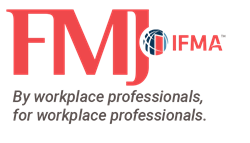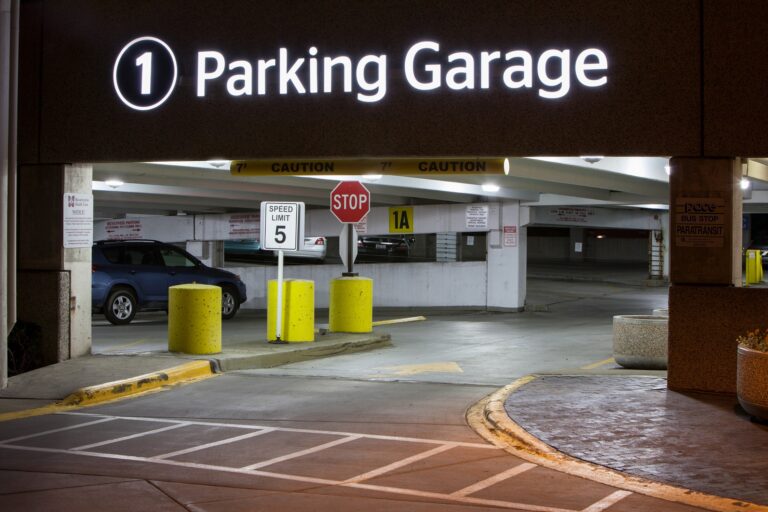Working together, three workplace initiatives—wellness, mobility and sustainability—are finding meaningful purpose in the office by offering clear economic advantages for the organization as a whole while providing distinct and notable benefit to a business’s number one asset—its people. Wellness programs are not new to the business world, but the acknowledgement of the benefits of an active lifestyle finally are being recognized and purposefully incorporated into workplace activities that encourage movement throughout the day, offer options of where and when to work, and contribute to sustainable goals. Combined, these programs appeal to both the physical health and the overall mental well-being of individual workers. Organizations are awakening to understand they can maintain the talent needed to succeed and encourage behaviors that contribute to an inviting and positive office environment at the same time.

Workplace wellness strategies
One can make a case for the need of workplace wellness strategies based on the fact that the number of jobs requiring moderate physical activity has dropped from 50 percent in 1960 to just 20 percent in 2012. The perils of sitting are well documented, as is the increasing realization that sitting is the new smoking of our generation. Recent research has revealed that adults who spend four or more hours per day sitting have an 80 percent increased risk of death from cardiovascular disease compared to those who spend less than two hours a day sitting.
From the micro focus of combatting the “sitting shift” in many office environments to the macro effect of sick days on health care insurance premiums, the simple truth is that good health is good for the economy. Researchers are increasingly linking poor worker health to poor economic outcomes, such as lower productivity higher absenteeism, shorter life spans and slower economic growth. For example, data from the National Study of the Changing Workforce show that 35 percent of employees who say their overall health is “excellent” are highly engaged on the job, compared to 23 percent of those who say they are in “poor” overall health. And 68 percent of employees who say they are in “excellent” health report they are “not at all likely” to leave their job, compared to just 45 percent of employees who say they are in “poor” health.
Mobility strategies are work practices that include technology to support workers anywhere/anytime. These allow for flexibility in work schedules that contributes to positive attitudes about the organization, the transfer of belief in the individual, and, ultimately, the worker’s perspective of her/his own work product contribution. Both onsite and external mobility programs provide staff with options that encourage more activity throughout the day and likely more loyalty to their employing organization. Older, more traditional paradigms in management styles are slowing change for some businesses, but more organizations are embracing mobility as a means to attract the best workers and keep the talent already in-house. A shift in management attitudes is resulting in a move toward results-based measurements for performance and productivity, making room for self-directed work and increasing amenities in the workplace that support active lifestyles. Businesses benefit by providing mobile flexibility for employees as identified by HR managers in a survey by Society for Human Resource Management (SHRM). Fifty-eight percent of HR managers reported that programs that allow employees to better balance work and life will be a key factor in attracting and retaining the best people.

Mobile work options
On-site mobility increases the potential for coworkers to socialize. Two-thirds of people would turn down a job offer with a pay raise to stay working with people they liked and respected. For on-site staff, mobility strategies could include the ability to move and being untethered around the workplace keeps people from sitting for long periods. A few examples of optional work environments include standing workstations, walking meeting or conveniently placed communicating stairs to encourage vertical circulation and less use of the elevators. Shared amenities, such as work/mail rooms, that require users to travel from their personal work space (where they are likely sitting) to retrieve prints, supplies and other information not only encourage movement during the work day, but are good strategies for reducing real estate and promoting colleague interaction that allows for those happenstance exchanges that spark new ideas for many high performing organizations.
For those not required to be on-site, mobile work gives the opportunity to move around town or the house throughout the day; time gained from not commuting (i.e. sitting in traffic) can be shifted to other activities that maintain health or reduce stress (i.e. workouts or family activities). A study commissioned by Microsoft in May 2011 explores attitudes toward flexible working among 1,500 full-time and part-time employees in office based roles in 15 European countries found that most businesses have embraced flexible working strategies for employees. The study revealed that “56 percent of flexible workers believe they work more productively away from the office, and 48 percent say this is because they can fit their work around personal commitments” and that would direct their decisions about where to work—a combination of work in the office and away from the office.
Sustainability, at its revealed core, is about the best stewardship of resources. It follows naturally the pursuit of sustainable design interventions integrate and amplify strategies on physical movement and material health. Simply put, what’s good for the environment is good for people too.
Choosing to walk, bike or take public transit instead of driving to work is a positive choice for the environment. Lesser known is the correlation that the use of public transit is linked with healthier lifestyles. Studies have shown that obesity rates are inversely related to the use of alternative transportation.
Further, a study of New York City residents found that body mass index ratings tend to decline significantly with increases in subway use, bus stop density, population density and mixed-use amenities in their neighborhood. Choosing locations for our workplaces that provide access to public transportation, bike routes and local businesses positively affects both people and the planet.
Healthy lifestyle choices
The overlap between sustainability and active lifestyles was explored extensively in the creation of NYC’s Active Design Guidelines. Communications, including posters freely available on NYC 311, encourage building occupants to, “Burn Calories not Electricity. Take the Stairs!” Effective public awareness campaigns such as these have been shown to increase the use of stairs by 50 percent, with the potential to reduce early weight gain. Bringing similar strategies to the workplace requires an approach by FM and operations leadership, with the support of change management professionals and tools, that roll out change in the organization’s policies that make it clear to staff that new models and process for wellness, mobile work and sustainability are supported, encouraged and part of an effective workplace.
In addition to healthy lifestyle choices made throughout the day, health also is influenced by unsuspecting environmental attributes. For example, access to natural light and views not only contributes to LEED credits, but research also has proven this has the potential to significantly reduce stress and chronic headaches.
Indoor air quality also has the potential to significantly affect the health and productivity of building occupants. According to the U.S. Environmental Protection Agency (EPA), many indoor environments have pollutant levels of two to five times higher and occasionally more than 100 times higher than outdoor levels due to occupant activities, building materials and ambient conditions.
This is significant considering Americans spend an estimated 90 percent of their time indoors, between work and home . These pollutants enter the body through the skin, inhalation and digestion and end up in our blood stream. We only are beginning to understand how environmental pollutants link to a myriad health problems including cancers, developmental disorders, immune deficiencies, reproductive complications and asthma. Designers and facility managers must understand the ingredients that make up our building materials and free indoor environments of known or suspected toxicants.
Making it a priority
Maximizing productivity and talent retention, while reducing stressors and distractions in the workplace, are consistently at the top of many businesses’ priorities. Contrary to past management and ownership perspectives, they no longer are viewed as mutually exclusive or obtainable only at the sacrifice of one for the other. Increasingly, recognition is being given to the powerful solutions found in the overlap between wellness, mobility and sustainability. FMJ
References:
- Parker-Pope, Tara. May 2011. “Less Active at Work, Americans Have Packed on Pounds.” New York Times: Well Blog.
- Science Daily. Jan. 2010. “Sedentary TV Time May Cut Life Short.” Science News.
- Aumann, Kerstin, and Ellen Galinsky. 2008. “The State of Health in the American Workforce: Does Having an Effective Workplace Matter?” 2008 National Study of the Changing Workforce. New York, NY: Families and Work Institute.
- Society for Human Resources Management, SHRM Research Spotlight: Workplace Flexibility in the 21st Century. October 2010 SHRM. Retrieved from http://www.shrm.org/Research/SurveyFindings/Documents/10-WorkFlexFlier_FINAL_Spotlight.pdf.
- OnePoll. 2012. “New research reveals job satisfaction is determined by our work colleagues.” Retrieved from http://www.jobsite.co.uk/insider/research-job-satisfaction-work-colleagues-10961/
- Microsoft and Vanson Bourne, “Attitudes Toward Flexible Working” Summary Research Report (http://download.microsoft.com/download/C/0/B/C0B1D53A-BAD3-4116-BF71-1EE19B538153/Microsoft%20NWOW%20Flexible%20Working%20Survey_Summary%20Research%20Report.pdf).
- David Bassett, John Pucher, Ralph Buehler, Dixie L. Thompson, and Scott E. Crouter (2008), “Walking, Cycling, and Obesity Rates in Europe, North America, and Australia,” Journal of Physical Activity and Health, Vol. 5, pp. 795-814. Retrieved from http://policy.rutgers.edu/faculty/pucher/JPAH08.pdf
- Andrew Rundle, Ana V. Diez Roux, Lance M. Freeman, Douglas Miller, Kathryn M. Neckerman and Christopher C. Weiss (2007), “The Urban Built Environment And Obesity In New York City: A Multilevel Analysis,” American Journal of Health Promotion, Vol. 21, pp. 326-334. Retrieved from http://www.activelivingresearch.org/files/Rundle_AJHP_2007.pdf.
- Veitch, J.A.; Newsham, G.R.; Mancini, S.; Arsenault, C.D. “Lighting and Office Renovation Effects on Employee and Organizational Well-Being.” September 2010.
- EPA. “Questions about your Community: Indoor Air” http://www.epa.gov/region1/communities/indoorair.html
- EPA. “An Office Building Occupants Guide to Indoor Air Quality.” http://www.epa.gov/iaq/pubs/occupgd.html
- Perkins+Will Transparency Site (http://transparency.perkinswill.com).
- Schwartz, Ariel (2012), “Is your Building Filled with Junk that Makes it Hard to Breathe?” Fast Company. Retrieved from http://www.fastcoexist.com/1680378/is-your-building-filled-with-junk-that-makes-it-hard-to-breathe.







